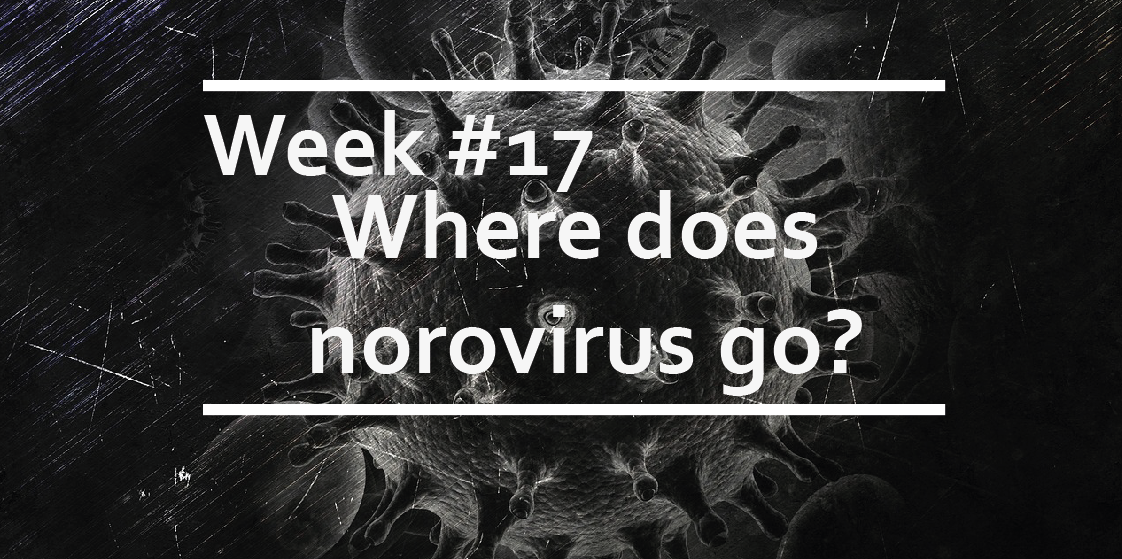Where does norovirus go?
Norovirus infections cause 700 million cases of acute viral gastroenteritis each year and about 200,000 deaths. For most people, a norovirus infection resolves shortly after the acute manifestation, but in some individuals, the virus is responsible for chronic infections. However, despite the disease burden, much about norovirus remains unknown.
What do we know?
Murine norovirus (MNoV) is a good model for the human norovirus as it recapitulates both its pathogenesis and immunity, thus enabling the study of norovirus biology in a relevant in vivo model. This virus, which grows well in myeloid cells in vitro, is known to infect only small populations of isolated epithelial cells in vivo, while adjacent cells in the intestinal epithelium remain clear. These elusive populations can act as reservoirs for chronic infection. However, the identity of these cells has so far remained mysterious. Recently, CD300lf was identified as the receptor for MNoV, information that Wilen et al. exploit in their quest to identify the target cells of the norovirus.
Myeloid or epithelial?
Given the abundance of CD300lf expression on bone marrow-derived myeloid cells, to determine whether these are the target of MNoV in vivo, the authors transplanted bone marrow from CD300lf knock-out and wild-type animals (and vice versa), before infection with MNoVCR6, a strain causing persistent enteric infections. Interestingly, wild-type mice receiving CD300lf knock-out bone marrow were susceptible to infection, whereas CD300lf knock-out mice receiving bone marrow from wild-type mice were resistant. This suggests that bone marrow cells are not the target of MNoVCR6 enteric infection. So what CD300lf-positive cells are responsible for norovirus infection? Immunofluorescent staining revealed a rare population of CD300lf expressing cells in the ileum and colon with the characteristic amphora-like shape of tuft cells, a rare chemosensory epithelial cell type involved in immune defence against intestinal parasites. Epithelial cells that stained positive for CD300lf also stained positive for a specific turf cells marker, confirming the identity of this population. These same cells also stained positive for viral antigen, providing evidence that the long-sought targets of norovirus are indeed tuft cells.
Tuft cells
Tuft cells are known as the main producers of IL25, and they play a role in inducing type 2 immunity in response to parasites and helminths. Interestingly, treatment with IL4 and IL25 before challenge with a low dose of MNoV enhanced infection. Also, when administered 21 days after infection with a high dose of MNoV (causing persistent infection), IL4 administration caused increased faecal shedding of the virus. Epithelial cell-specific IL4 receptor conditional KO mice revealed that the effect of IL4 is not immune-mediated, but that the cytokine acts directly on tuft cells, possibly by regulating expression.
Antibiotics against viruses?
Using germ-free mice, the authors show that intestinal bacteria are not required for CD300lf expression or norovirus infection. Nevertheless, it has been widely reported that broad-spectrum antibiotics that deplete intestinal bacteria prevent or reduce MNoVCR6 transmission and persistence. The authors provide an interesting explanation for this unusual and counterintuitive observation. RNA-seq analysis of antibiotic-treated mice revealed a reduction in tuft cell-specific transcripts, suggesting that in the absence of endogenous bacteria the expression of tuft cells is also reduced. This occurs primarily in the colon and, to a much lesser extent, in the ileum. Conversely, IL4 and Il25 caused tuft cell hyperplasia in the ileum but not so much in the colon, suggesting that both type 2 cytokines and intestinal bacteria regulate tuft cells, but differently and a tissue-specific manner. This also indicates that the number of tuft cells is likely to be more important than their anatomic location in determining infection outcome and that these cells might represent an immune privileged site for viral replication.
Outlook
This work raises an important question about the role of tuft cells in infection and immunity. Are tuft cells also responsible for inflammatory bowel disease in the susceptible host? Do other viruses target the same cells? Moreover, how do so few isolated cells, scattered in the gut, determine the severe pathogenesis of norovirus infection? However, the findings of Wilen et al. have overcome a major barrier to understanding norovirus infection and pathogenesis. New drugs directed at tuft cells or their surface receptor (CD300lf) can now be developed, thereby creating new therapeutic opportunities. Equally, understanding the role of these important cells in chronic disease is paramount: if tuft cells can effectively act as virus reservoirs, it will be critical to understand their contribution to other chronic infections of the gut.
Strong in state-of-the-art microscopy facilities and expertise, Virology Research Services can assist with immunofluorescence studies of viral antigen and cellular receptors and proteins important for viral infection. Also, our high-content and high-throughput imaging platform can help you identify compounds that inhibit viral infection.
If your project involves virus immunofluorescence and antiviral discovery, please contact us to find out how we can help.




